Salt is a mineral compound that’s comprised mostly (or exclusively in some cases) of sodium chloride. It’s a ubiquitous flavoring agent for food and it provides essential electrolytes.
Some types of salt have trace amounts of other minerals, like calcium and magnesium, In some people, too much sodium intake over long periods of time can lead to high blood pressure, so salt is a flavoring agent best used in moderation.
Looking for the best salt for gourmet cooking and high-quality, healthy meals? Our research team has ranked the ten best salts of the year according to flavor and quality.
Research
Rankings
1. Hawaiian Pa’Akai Alaea Sea Salt
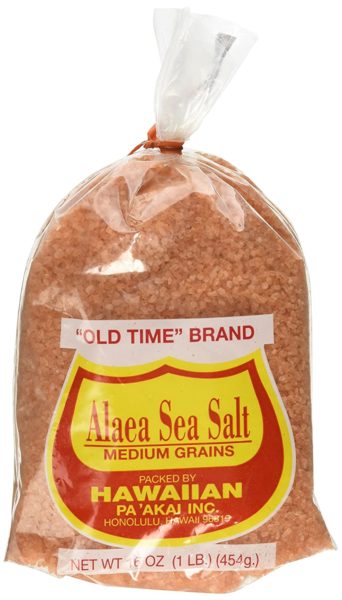
Considered by some to be one of the most exotic salts on the market, Red Alaea Hawaiian Sea Salt is made with a mixture of sea salt and red alaea clay from Hawaii’s unique soil deposits.
The result is a deep, rich, red salt that contains a tremendous number of trace minerals. While it’s not the right choice for every recipe, if you want a salt that’s rich in nutrients and unlike anything else in terms of color or flavor, Hawaiian Pa’Akai Alaea Sea Salt is an excellent choice thanks to its traditional ingredient sourcing: sea salt and Hawaiian red clay.
2. Olde Thompson Mediterranean Sea Salt
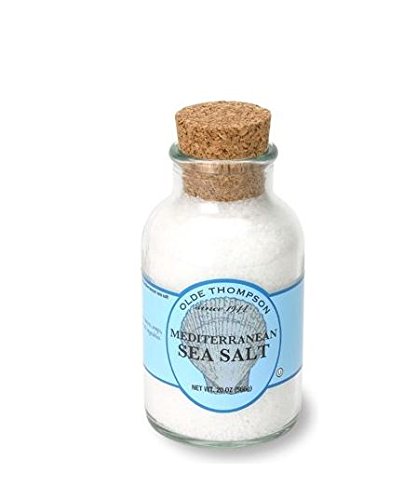
Olde Thompson Mediterranean Sea Salt is traditionally-dried sea salt from the Mediterranean Sea. It contains traces of elements like iron, zinc, and potassium that you wouldn’t find in a regular table salt.
Though the primary constituent is still sodium chloride, some people can taste subtle differences in the flavor profile, while others prefer the coarse texture and appearance of these sea salt grains.
3. The Spice Lab Pink Himalayan Salt
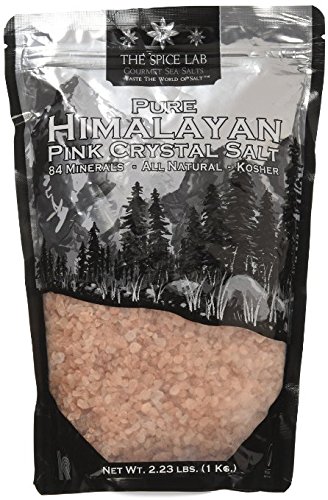
The Spice Lab Pink Himalayan Salt has the characteristic pink hue and vaguely different taste profile that’s characteristic of all Himalayan pink salts thanks to their high content of calcium, magnesium, and other trace minerals.
These minerals add some nutritional value and enhance the visual and flavor appeal of the salt. The Spice Lab’s Himalayan Salt is very coarse, which makes it great for hand-grinding and even for display.
Since it’s mined directly out of the ground, you’ll get one of the most natural forms of salt out there.
4. Redmond Real Salt Ancient Sea Salt
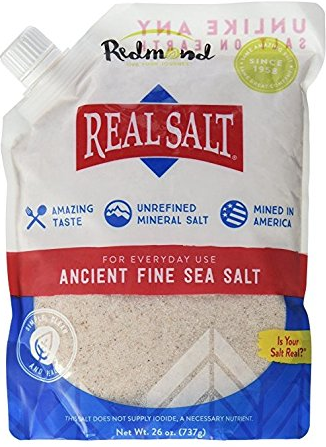
Redmond Real Salt makes an unusual and unique sea salt: it’s made in America, and it’s not derived from modern-day ocean water.
Rather, Redmond Real Salt uses the deposits of an ancient inland ocean in Utah as the source of its salt.
Whether this confers any benefits over normal ocean salt is debatable, but it certainly makes this salt a conversation-starter and has won the company some avid fans.
5. Aromasong Sea Salt
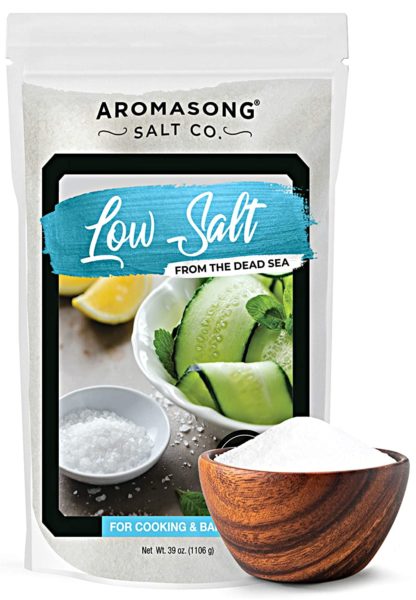
Aromasong proves you don’t have to opt for low quality salt substitutes just to keep your sodium intake low. By sourcing sea salt and potassium chloride from the Dead Sea, it provides a great tasting low sodium salt substitute that is still perfect for artisanal dishes, choice cuts of meat, and other places where you’d use a traditional high quality salt. For low sodium dieters and others trying to improve their heart health, it’s a great choice.
6. La Baleine Sea Salt
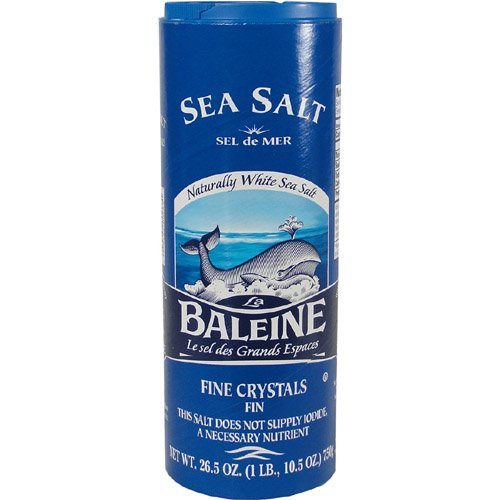
La Baleine Sea Salt is a safe and reliable option for an everyday sea salt that’s a step up from normal table salt but isn’t quite as exotic as some of the Hawaiian or Himalayan salt varieties.
Like all natural sea or mineral salts, it lacks iodine, a necessary nutrient, so you’ll have to get that elsewhere in your diet.
7. Selina Naturally Celtic Sea Salt
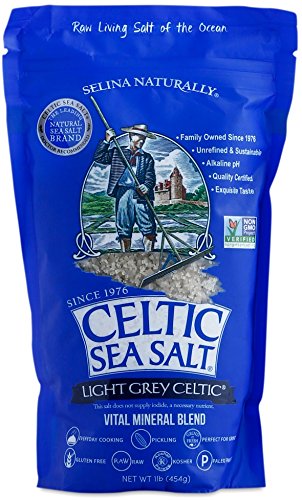
Celtic sea salt is made much in the same way that regular sea salt is made: ocean water is allowed to slowly evaporate, which leaves behind the complex blend of minerals dissolved in the ocean water.
Celtic sea salt also contains the remains of the clay material at the bottom of traditional sea salt evaporation pools, which is why it has a grayish brown tinge to it.
Selina Naturally makes a fine ground Celtic sea salt that’s great in French recipes that call for the dense, heavy, moist properties of Celtic sea salt.
8. San Francisco Salt Co Black Truffle Salt
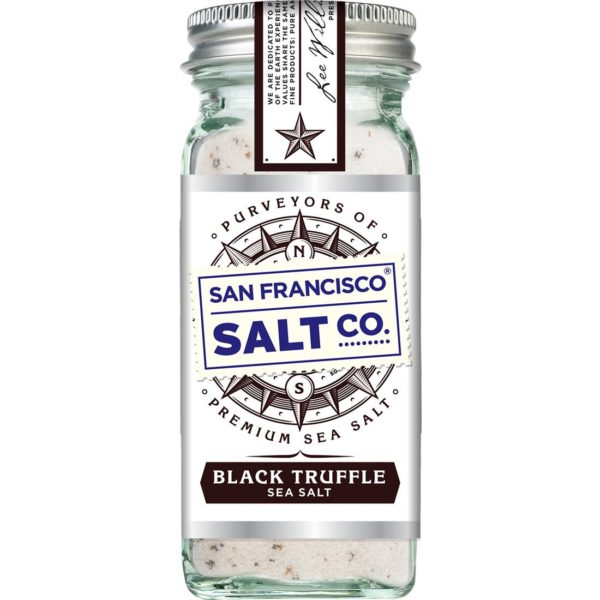
For a truly gourmet experience, try cooking with San Francisco Salt Co Black Truffle Salt. The deep, savory flavor of truffles is infused into this cooking salt.
It’s great for traditional Mediterranean and Italian dishes like olives, tomatoes, and fatty cuts of meat. Though it’s definitely not compatible with every kind of dish, it’s an excellent secret weapon for your spice cabinet.
9. Jacobsen Salt Co Habanero Salt
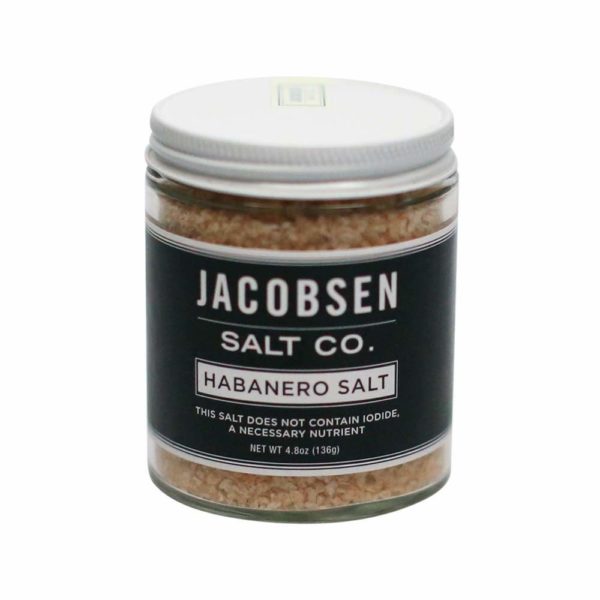
Jacobsen Salt Co Habanero Salt certainly is not for every type of dish, but in niche uses, it’s great. This hot and spicy salt has a combination of table salt and the oils of habanero peppers.
Because of the chemical properties of habanero extract, this salt works best on dishes that are slightly oily, like eggs, meat, avocado, or anything with olive oil.
Though it’s not going to be everyone’s cup of tea, it can be an excellent finishing salt for some key gourmet dishes.
10. Wild Kosher Flake Salt
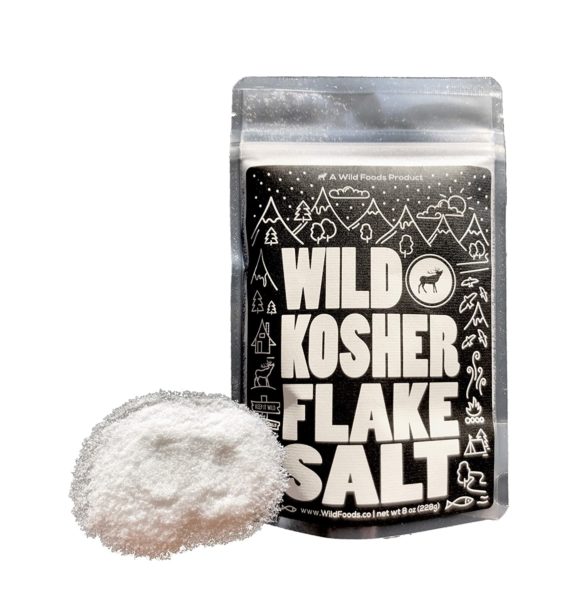
Wild Kosher Flake Salt isn’t particularly distinctive in its flavor or mineral contents, but it is great for those rare occasions when you want salt that’s thin and flakey, versus the large, rough, coarse grains you’ll get in most other sea salt brands. For margaritas or garnishing, this flake salt is good to have on hand.
Category winners
Best salt overall: Hawaiian Pa’Akai Alaea Sea Salt
Hawaiian Pa’akai makes coarse-grained traditional hawaiian sea salt whose combination of trace minerals from the sea and Hawaiian red clay will spice up any beef, chicken, pork, or fish recipe. Its distinctive taste makes it our top overall recommendation.
Best Himalayan salt: The Spice Lab Himalayan Salt
For the distinctive pinkish hue and taste of Himalayan salt, go for The Spice Lab. Their Himalayan salt is sourced from mines deep in the mountains, and as such contains no plastics or other impurities.
Best low sodium salt: Aromasong Sea Salt
Trying to keep your sodium down but don’t want to give up high-quality salt? Aromasong has got you covered. By using salt and potassium chloride, both sourced from the Dead Sea, Aromasong delivers an authentic-tasting sea salt with vastly less sodium.
Best black truffle sea salt: San Francisco Salt Co. Black Truffle Sea Salt
San Francisco Salt Co makes a fantastic salt that uses black truffles from Italy with real sea salt. These ingredients combine to make a uniquely rich, savory flavor that compliments both meats and vegetables.
Best salt for cooking meat: Olde Thompson Mediterranean Sea Salt
For choice cuts of mean, Olde Thompson is unmatched. This artisan Mediterranean salt is the perfect choice for bringing out the best in your pork, steak, or chicken.
Best Hawaiian sea salt: Hawaiian Pa’Akai Alaea Sea Salt
The defining characteristic of Hawaiian sea salt is its reddish color, which comes from the red clay soil in Hawaii. Hawaiian Pa’akai’s use of authentic ingredients makes it the best Hawaiian sea salt on the market.
Who should buy salt?
Salt is safe for all individuals, looking to maintain proper health functioning. It’s also great for chefs who want to enhance the flavor of their food.
Many manufacturers will benefit from salt as well since it’s a phenomenal preservative. People with high blood pressure or kidney issues should avoid excess salt, since salt may worsen the issues.
How we ranked
There are a variety of salts available on the market, including table salt, pink Himalayan, Celtic salt, kosher salt, red and black Hawaiian salt, fleur de sel, and smoked salt. Each one has it’s own benefits, with some being better than others in terms of nutrition and value.
Table salt is highly refined and finely ground, with impurities and trace minerals removed in the process. Kosher salt is coarser-grained than regular table salt, which isn’t actually certified kosher and doesn’t contain iodine. Due to their lack of nutrients and extra benefits, we chose not to include these in our rankings.
Sea salt, like La Baleine and Redmond, is harvested from evaporated seawater and contains various additional minerals beneficial to the human body like iron and zinc. It is the most affordable salt with added benefits and earned lots of spots in our rankings.
Celtic sea salt, like Selina, is found in mineral-rich seawater off the coast of France and provides a nutritional powerhouse, which is why you’ll find it in our rankings.
Himalayan salt, like The Spice Lab, is the purest form of salt in the world and comes in different colors, the most recognizable being pink. It contains all 84 natural minerals and elements found in the human body, making it one of the best slats available.
Fleur de sel is a sea salt hand-harvested from tidal pools off the coast of Brittany, France, and is known as the caviar of salts for its insane price. We chose not to include it on our list because the price did not justify the taste or nutrition. This salt is reserved for high-end restaurants and foodies.
Lastly, we have the Hawaiian sea salts from San Fransico Salt Co, which come in 2 main colors: red and black. Black Hawaiian sea salt gets its color and nutrition from being infused with natural charcoal. The better of the two, red Hawaiian salt, gets its color and nutrition from being insured with iron-rich volcanic clay known as alaea. Due its rarity, flavor profile and excellent nutrition, red Hawaiian salt from the San Fransisco Salt Co took the top spot.
Benefits
Salt has been used as a preservative for centuries. The high amount of sodium in salt inhibits the growth of bacteria that can cause spoilage.
Sodium chloride (NaCl) is commonly called salt; it consists of 60% chloride and 40% sodium. Salt and sodium are used interchangeably to refer to this compound, which is often used to improve the flavor of food.
We get most of the sodium in our diets from salt, although it occurs naturally in small amounts in most foods.
Salt contains essential minerals that act as electrolytes in our bodies. The minerals in salt work to ensure proper muscle function, balancing fluid levels, and participating in the process of transmitting messages through the nervous system.
Depending on the type of salt, other minerals can be present in small amounts, such as zinc, potassium, iron and calcium; table salt often has added iodine. (2, 3)
Salt is obtained through mining it from the earth or the evaporation of seawater or other water rich in minerals; table salt is the most common type available, and others include sea salt and Himalayan pink salt.
Flavor and texture varies between types, and the health effects of different kinds of salt are actually quite similar.
People who already have healthy blood pressure don’t need to drastically decrease their salt intake. Cutting back on sodium intake can make a dramatic difference in blood pressure levels for people who have a condition called salt-sensitive hypertension, but the average blood pressure reduction in healthy subjects is minimal. (4)
A 2013 study reported significant salt restriction practiced by healthy individuals dropped pressure by only 2.42 mmHg systolic and 1.00 mmHg diastolic. Here’s an example of how a person’s blood pressure measurement might change: 130/75 mmHg could be reduced to 128/74 mmHg. (5)
We’ve been told eating too much salt jacks up blood pressure and raises the risk of suffering a stroke or heart attack, but the actual benefits of restricting sodium are in question.
This is obviously not the drastic reduction one would hope for by removing most salt from the diet.
Recent review studies analyzing data gathered from multiple clinical trials found no evidence that restricting sodium decreases the risk of heart attack, stroke, or death. (6, 7)
Salt intake that is too low could be associated with negative health consequences. Some scientific research has found that very low sodium diets can be harmful in some cases.
For example, a meta-analysis of studies indicated heart failure patients restricting sodium had 160% higher risk of dying than those who did not. (8) Moverover, eating less than 3,000 mg sodium daily was associated in several studies with a higher risk of dying from heart disease. (9, 10)
Very low sodium intake might not be great for cholesterol levels either. Restricting salt is linked with higher levels of LDL cholesterol (the bad kind), as well as elevated triglyceride levels. (11)
Sodium levels that are too low could also negatively affect your metabolic health. One study found that type 2 diabetes patients who restrict sodium are at higher risk for death. (12) Additionally, eating a low-salt diet has been associated in several studies with insulin resistance. (13, 14, 15)
Side effects
Some evidence suggests that sodium intake could increase your risk for stomach cancer.
Observational studies have linked high salt intake to an elevated risk of developing stomach cancer, and several hypotheses about why this may be so have been suggested. Excessive salt may damage the lining of the stomach, which could lead to increased exposure to carcinogens. (16, 17)
Alternatively, high salt levels may encourage the growth of helicobacter pylori, the bacteria that can result in inflammation and gastric ulcers. (18, 19)
A review of studies published in 2012 analyzing data from more than 200,000 test participants showed that those who habitually consume high amounts of salt run a 68% higher risk of developing stomach cancer than people who eat a low-salt diet. (20)
Recommended dosage
Many health authorities recommend keeping sodium intake below 2,300 mg daily. Certain groups and experts continue to insist a considerably lower amount is better. (21, 22, 23)
Salt is 40% sodium by weight, and 2,300 mg amounts to about a teaspoon of salt (6 grams). Estimates gathered from survey information indicate as many as 9 out of 10 Americans consume more than the recommended amount. (24)
The majority of salt in a typical diet is from processed foods and restaurant foods. Estimates indicate that only about a quarter of most people’s salt intake comes from what is added to food when cooking at home or at the table. (25)
Read food labels before making a purchase to determine how much sodium the product contains.
Some health conditions require a restriction of sodium, so if your doctor has advised you to watch your salt intake, it’s important to follow the guidelines you’ve been given. (26)
For healthy people who eat only minimal amounts of processed food and focus on whole, natural foods, there is probably no reason to be concerned about salt intake.
FAQ
How much salt per day is healthy? Though the recommended amount of sodium depends on your age and health condition, the consensus is to consume less than 2300 milligrams of sodium per day to maintain health and prevent the development of diseases. For those with high blood pressure, pre-existing heart conditions, obesity, or other major conditions, the recommended values would be lower to prevent the progression or development of further health consequences. For these populations, the recommended sodium intake per day may be as low as 1500 milligrams, though this varies widely (1).
What does salt do in the body? In conjunction with other minerals and electrolytes, salt assists with proper fluid balance within the cells and body, muscle contraction and movement, nerve functioning and transmission, and the maintenance of blood volume.
What is salt? Salt or sodium is a chemical that, when combined with chloride, forms table salt (NaCl). Sodium is often found naturally in food but is usually added to food and beverages in the form of salt. When considering food and nutrition labeling, sodium is a term often interchangeable with salt. Despite the negative beliefs surrounding salt, the body does require sodium to function, and cutting it out of your diet entirely is extremely dangerous.
Is salt bad for you? In normal amounts, salt does not pose health consequences and is required for the body to perform many functions. However, when consumed in excess, salt may result in many health conditions and symptoms.
Many studies report that increased salt intake may result in health conditions related to the circulatory system (blood vessels, etc.), heart, brain, and kidneys. In particular, increased salt intake can lead to higher blood pressure, artery pressure, and other heart conditions. These conditions occur because sodium intake results in fluid retention in the body, which increases the strain on the heart and other organs (2).
Because consuming larger amounts of salt encourages the body to flush out the system, other essential nutrients may be lost along the way. When minerals like calcium are lost, conditions like osteoporosis may develop.
Additionally, frequent consumption of sodium in large amounts can lead to some sort of psychological dependence on salty foods. Therefore, the consequences of consuming too much salt are not just short-term, but rather long-term as well (3).
What is considered low-sodium? When you go to the grocery store, you’ll likely come across items that advertise themselves as “low-sodium.” This classification is not just based on the company’s standards, but rather the standards set by the Food and Drug Administration.
Generally speaking, foods labeled as “low-sodium” include less than 5% of the daily recommended value for sodium. The FDA also has guidelines for labeling when it comes to advertising food products as “reduced sodium,” “salt-free,” “unsalted,” and other classifications. If you are looking to purchase these items in an attempt to reduce your sodium intake, you should research what each of these terms means rather than just assume their meaning.
Does water flush out excess salt? Water does essentially flush sodium out of the system. When larger amounts of fluids are consumed, it increases the rate at which minerals like sodium are removed from the body.
In addition to consuming more water during the day, it could also prove beneficial to consume larger amounts of potassium to provide the same “flushing” effect.
An increase in potassium intake boosts the functioning of the kidneys, replacing the potassium content in the body while also encouraging the body to flush the system (in this case, salt). Sodium also increases levels of thirst, which ultimately results in higher fluid intake and the flushing effect that sodium provides.
Can a person live without salt? No, the body is incapable of functioning correctly without salt. However, this does not mean that a person has to eat the recommended limit of 2300 milligrams of sodium per day to function adequately.
Many organizations assert that 500 milligrams a day should be the minimum amount of salt consumed to reach optimal levels of body function. While low levels of sodium intake can prove beneficial, there are severe consequences of not consuming any sodium your diet.
What are the health benefits of salt? Perhaps the greatest function of sodium within the body is the role it plays in muscle, nerve, and heart functioning. Slat is partially responsible for muscle movement and contractions, as well as nerve transmission. Salt is also considered one of the body’s primary source of electrolytes, which makes it imperative for you to consume sodium in the recommended amount.
Salt also plays a vital role in clearing out the system by encouraging fluid balance within the body. Though dangerous in large amounts, salt is required within the body, and the body cannot function properly without appropriate levels.
What happens if you don’t eat enough salt? Because the body depends on salt to perform many of its functions, there are negative consequences that come along with eating too little. This condition is called hyponatremia, which can result in symptoms like dizziness, nausea, fatigue, and mental confusion. With too little sodium in the body, the body begins to shut down and reduce its ability to function correctly. This can particularly affect the kidneys, heart, and blood. Left untreated, this condition can prove to be fatal and cause long-term health effects. If you are planning to reduce your sodium intake or cut salt from your diet, it is crucial to do so strategically and without depriving the body of this vital nutrient.
Where does rock salt come from? Rock salt is found in rocks and is often obtained from salt mines, where a team of miners removes the salt from the rocks. Another method of retrieving salt from salt beds is solution mining, which is when water is used to dissolve the salt found in salt beds. At this point, the solution is collected and evaporated to remove the water, resulting in the end product, salt.
Where does sea salt come from? Sea salt is collected after salt water is evaporated. Saltwater has a significant level of salt and, when the water is removed (naturally through the sun or with equipment), salt remains. Sea salt is significantly more pure than rock salt and is often considered healthier than rock salt for this reason.
How long does salt stay in the body? It is difficult to judge how long salt stays in the body since salt is required for the body to function optimally. With that said, the body always has some level of salt to provide this functioning. Just how long salt stays in the body depends highly on a person’s salt intake as well as water consumption in a given period. If water is consumed in larger amounts or more frequently, the sodium will flush out quicker.
What foods contain salt? Nearly all foods and beverages have some level of sodium in them, but the actual amount in each is different. Generally, many foods that are considered “high” in sodium include canned foods, salted nuts, and meat products. In some of these foods, you might find a sodium level of 50% or more of the daily recommended intake.
Canned foods, in particular, have extremely high levels of sodium in them because salt is often used to preserve the food in the can. Additionally, many products on the market that are normally low in salt have salt added to them to improve their flavoring or longevity.
Why is salt dangerous? In reasonable amounts, salt is not at all dangerous. In large amounts, the body’s ability to function optimally is risked and, therefore, may lead to dangerous situations.
When large amounts of salt are consumed, there are significant effects on the heart and blood. Specifically, blood pressure may rise, which puts a greater strain on the heart and circulatory system. Large amounts of sodium can also affect the brain’s ability to function and could lead to serious medical emergencies.
What is the most significant danger of consuming to much salt? The greatest reason that sodium is dangerous is because of the pressure it puts on the body’s organs and systems. This is why it is so vital to maintain appropriate levels of sodium and not consume too much.
What is the difference between salt and kosher salt? The major difference between regular salt and kosher salt is the physical appearance. As compared to table salt, kosher salt has larger grains.
When preparing recipes that call for salt, you can use kosher salt to replace regular salt. However, you have to be careful about how much you use. Given the large grains found in kosher salt, making it take up more physical space, you would need more kosher salt to equal the intended amount of regular salt.
Does sea salt taste the same as table salt? Unless you consider yourself to have extremely high-functioning taste buds, you likely will not be able to tell the difference between table salt and sea salt.
Does salt have calories in it? Salt does not have any calories, but this does not mean that you can add endless amounts of salt to your food or beverages without consequences. As mentioned earlier, too much salt can have adverse effects on the body. However, the lack of calories is a positive aspect of salt.
Does salt make water boil faster? Adding salt to water does not make water boil any faster than it would without the addition of salt. Many even suggest that adding salt raises the boiling point of the water, which results in a more extended time period needed to boil the water.
In reality, adding salt to boiling water enhances the flavoring of the water, which then enhances the flavor of the food. Adding salt to boiling would be based on your personal preferences and does not significantly impact the food added or water boiled.
Does salt water help wounds to heal? If you’ve ever had teeth removed or experienced dental surgery, your dentist probably recommended that you gargle salt water to speed up the healing process. Generally, using salt as a mouthwash assists in gently removing bacteria and debris from the mouth. While saltwater may be a useful tool for smaller cuts, it’s not recommended for severe open wounds.
Why is iodine in salt? Iodine is added to salt purely for health reasons. The primary reason behind this is the fact that Americans were consuming too little iodine in their diets, and this was an easy way to supplement iodine without doing so directly.
The health benefits of iodine mostly concern the functioning of the thyroid gland. A deficiency in iodine can lead to health conditions like goiter and hypothyroidism.
Related Articles
Recap
Salt delivers sodium, an essential electrolyte for keeping your body functioning. Some types of salt, like sea salt and Himalayan salt, also deliver trace amounts of other minerals like zinc, potassium, or magnesium that help with neural and muscular function.
Restricting salt intake can have long term health benefits for people with certain conditions, but evidence does not support the practice of sodium restriction for many of the high-profile applications generally recommended, such as protecting heart health. Indeed, certain chronic health conditions seem to get worse on very low sodium diets. So, unless you’ve been told that you need to be on a sodium restricted diet, you don’t need to be extremely stringent about your salt intake.
For Body Nutrition’s #1 salt recommendation, click here.